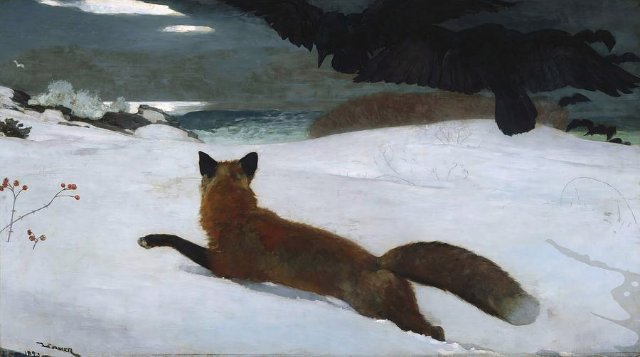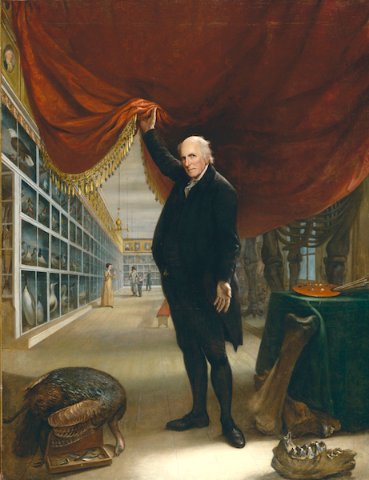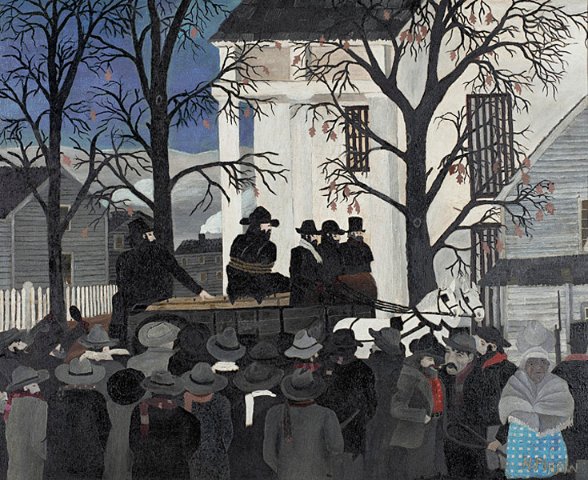Summer at Peabody Essex Museum
Making History: 200 Years of American Art from the Pennsylvania Academy of the Fine Arts
By: PEM - Apr 02, 2025
This summer, the Peabody Essex Museum (PEM) takes visitors on a journey across time, and through medium and identity, surveying 200 years of American painting and sculpture through 85 American artworks. Making History: 200 Years of American Art from the Pennsylvania Academy of the Fine Arts considers what it meant to be an American artist at the time of the nation’s founding and what it means to make art in the United States today. Co-organized by the American Federation of Arts and the Pennsylvania Academy of the Fine Arts (PAFA), Making History is on view at PEM from June 14 through September 21.
The exhibition delves into the extensive historic and modern collections of the first art school and museum in the United States. Established in Philadelphia in 1805, the Pennsylvania Academy of the Fine Arts (PAFA) has long championed American art and artists and was the first art academy in the nation to admit women and Black art students for study in the 1800s. The exhibition features PAFA’s formidable collection of well-known, iconic works by 19th and 20th-century artists such as Edward Hopper, Winslow Homer, Gilbert Stuart, Georgia O’Keeffe, Horace Pippin, Childe Hassam, Thomas Hart Benton, Mary Cassatt and Stuart Davis, alongside outstanding pieces by artists such as Elizabeth Osborne, Laura Wheeler Waring and Raymond Saunders.
Since the founding of the United States, artists have played a key role in shaping the nation’s history and reframing shared perspectives of pressing social and political issues. By embracing the stories of an array of artists, Making History offers a range of narratives on American art, culture, and community. Assembled together, these works show us how artists shape our contemporary understanding of America’s past, present, and future.
“The perennial question – what makes an artwork American – is interrogated again and again in this exhibition that pairs widely acclaimed and recognizable paintings with lesser known stellar works by artists sometimes overlooked during their time,” said Jeffrey Richmond-Moll, Ph.D., The George Putnam Curator of American Art and organizing curator of this exhibition at PEM. “Making History reveals American artists as they have always been: a diverse group that includes women, artists of color and members of the LGBTQ+ community. Since the founding of the United States, these artists have played a vital role in crafting and continually retelling the nation’s history.”
The European art establishment of the 17th century introduced the term “history painting” to describe scenes that drew upon ancient history, mythology, and the Bible. At the nation’s founding, American artists began altering this approach by depicting contemporary stories, as if to show history was in the making all around them. Alice Neel extended this approach into the early 20th century when she depicted impoverished women and children who slipped through the cracks of government bureaucracy during the Great Depression in her painting, Investigation of Poverty at the Russell Sage Foundation (1933). By creating this painting, Neel ensured that the inequalities this family experienced remain part of the historic record of America. She described the circumstances behind this unsettling depiction:
The woman seated in a chair in the middle was living with her seven children under an overturned automobile—that was their house. She had a rash all over her chest. And these two old men at the side were just a couple of old wretches from Bleecker Street . . . . The Russell Sage Foundation never gave a penny to the poor, but they investigated the poor. Out of that came social security and welfare, but before that, you just starved to death.
Portraits create connections to people across different times and experiences. Prominent American artists in the 1700s and 1800s, influenced by European traditions, privileged imposing portraits, symbolizing power and wealth and often featuring white subjects of prominence. Other artists shaped a different narrative, creating portraits that honor family members, friends, and mentors. In the 1800s and 1900s, Black artists illuminated narratives of Black accomplishment, pride, and power. Barkley Hendricks is widely acknowledged as the father of Black postmodern portraiture. After studying at PAFA in the 1960s, he built a career around painting realistic life-size portraits of individuals at the center of contemporary Black fashion and culture, such as 1968 painting J. S. B. III.
Making History takes us on a journey to encounter a range of people, places and events to contemplate how America’s founding principles are lived and experienced every day. Scenes of ordinary people and domestic life reflect the reality of their time and the unique perspectives of the artists. Warm depictions of mothers and children hang in contrast to scenes of independent women in the bustle of modern American cities. Through landscape painting and still-life scenes, we can see Americans’ ever-changing relationship with the natural world and gain insights into Americans’ evolving sense of national identity in relation to the wider world.



